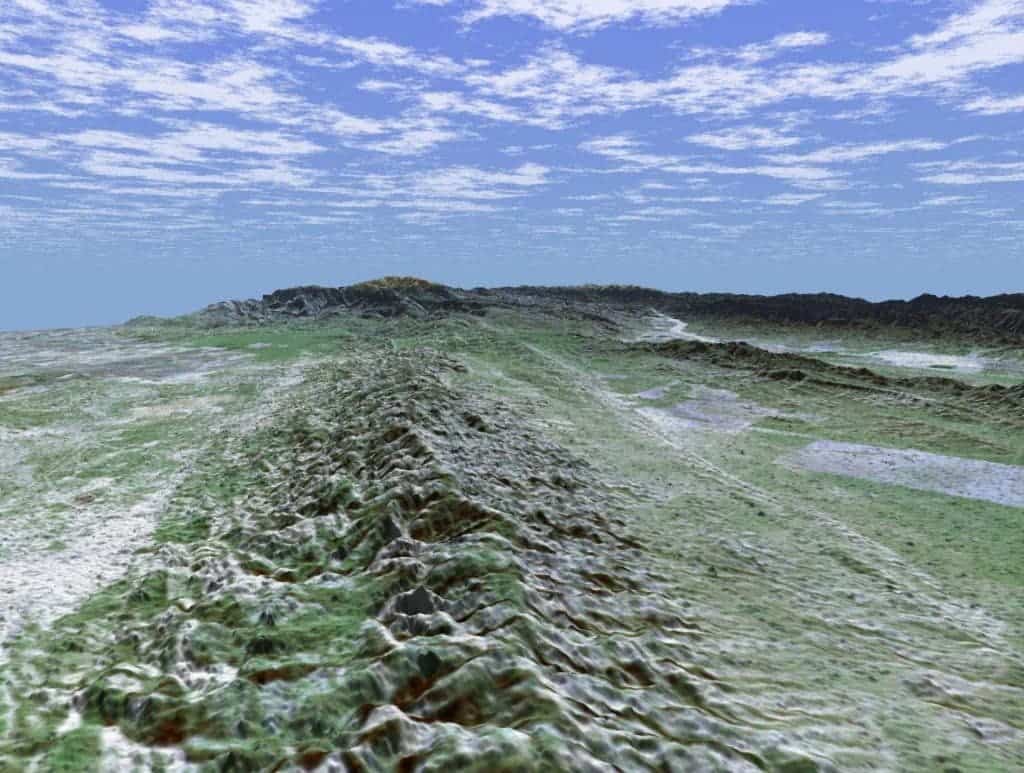Some of the earthquakes that take place on the San Andreas Fault – which extends approximately 800 miles through California – are the result of the gravitational pull between the sun and the moon, according to a new study.

A 3-D perspective view of the San Andreas Fault that extends through California. Credit: Wikipedia
For years, scientists have been fascinated by the gravitational tug of war between the sun and moon and the effects that it has on the Earth. Just like sea levels, the surface of the Earth goes up and down with the tides due to this gravitational pull. In the current study, the team found that during certain phases of this cycle, low-frequency earthquakes are more likely to occur
“It’s kind of crazy, right?” said Nicholas van der Elst, a U.S. Geological Survey (USGS) geophysicist and first author of the study. “That the moon, when it’s pulling in the same direction that the fault is slipping, causes the fault to slip more – and faster. What it shows is that the fault is super weak – much weaker than we would expect – given that there’s 20 miles of rock sitting on top of it.”
Van der Elst and his team examined around 81,000 low-frequency earthquakes that took place between 2008 and 2015 along the Parkfield region of the San Andreas Fault and looked for a connection to the “fortnightly tide,” which is the fault’s two-week tidal cycle. The data revealed that these particular earthquakes occurred more often during the waxing period – the time when the tide is increasing in size at the fastest rate.
Tides within the surface of the Earth are strongest when the sun and moon and aligned and these forces cause stretching and compression of its crust. Some faults are more susceptible to tidal forces than others, and numerous additional factors such as the orientation of the fault and its distance to the Earth’s crust affect this susceptibility.
Examination of low-frequency earthquakes and their connection to tidal forces can help geologists better understand the San Andreas Fault and predict the possible outcomes of larger earthquakes. Furthermore, they also provide information on regions of the fault that extend as far as 20 miles underground and would otherwise be impossible for researchers to reach.
“It’s almost like having a lot of little creep meters embedded in the fault,” said David Shelly, a USGS seismologist and co-author of the study. “We can use these low-frequency earthquakes as measurements of, at least in a relative sense, how much slip is happening at each little spot on the deep part of the fault where we see these events. When we don’t see them, we don’t know what’s happening; we don’t know whether it’s slipping silently or not slipping at all.”
Journal Reference: Fortnightly modulation of San Andreas tremor and low-frequency earthquakes. 18 July 2016. 10.1073/pnas.1524316113









